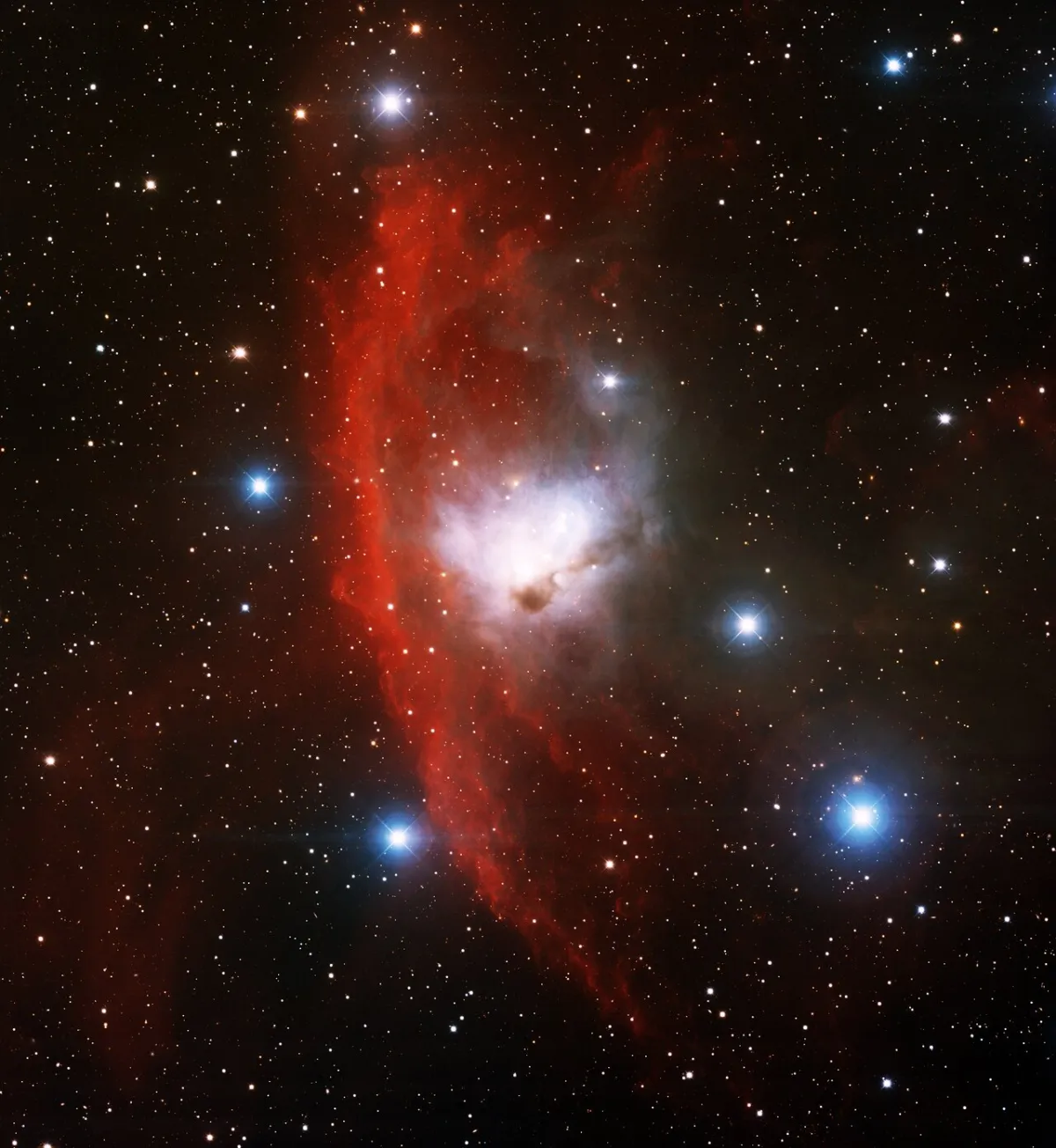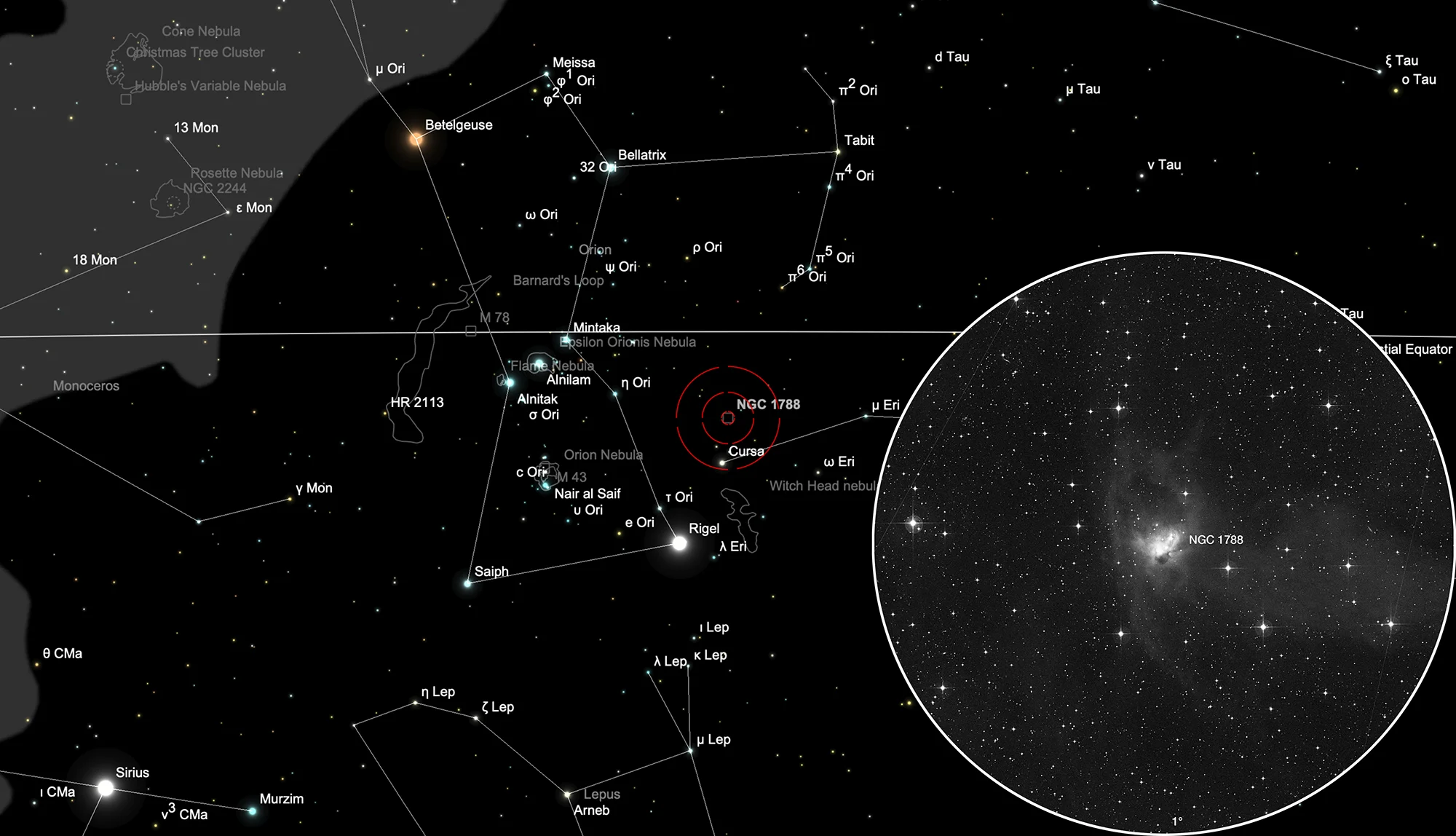Galactic Nebula NGC 1788

History
This nebula was discovered by William Herschel on 1 February 1786 using his 18.7 inch reflector. He cataloged it as V 32 and noted: «Considerably bright, very large, much diffused and vanishing. Near and south following bright star.» [464] Dreyer added the nebula as NGC 1788 to his New General Catalogue published in 1888. [313]
In 1946 the Swedish astronomer Sven Cederblad published a study of bright diffuse galactic nebulae where he listed NGC 1788 as Cederblad 40. [130]
The American astronomer Beverly T. Lynds published in 1962 her «Catalogue of Dark Nebulae» that she found on the blue and red photo plates of the «National Geographic Palomar Observatory Sky Atlas» (POSS), taken with the 48 inch Oschin Schmidt telescope at Mount Palomar Observatory. The dark cloud west of NGC 1788 she listed as LDN 1615 and the dark cloud within as LDN 1616. [473] In 1965 she published then her catalog of bright nebulae where NGC 1788 is listed as LBN 203.49-24.76 (LBN 916). [270]
Sometimes this nebula is called «Cosmic Bat Nebula» or just «Bat Nebula». An ambiguous name that is also used for other nebulae: LDN 43 (dark nebula in Ophiuchus, NGC 6995 (eastern part of Veil Nebula in Cygnus), Sh 2-129 (Flying Bat Nebula in Cepheus).
Physical Properties
NGC 1788 is a starforming region with reflection nebula surrounded by a glowing red ring of hydrogen gas. The stars inside the nebula are only about a million years old, which is very young compared to most stars. The ring of glowing hydrogen gas is energized by nearby hot, massive stars. [635]
| Designation | NGC 1788 |
| Type | RN |
| Right Ascension (J2000.0) | 05h 06m 53.2s |
| Declination (J2000.0) | -03° 20' 28" |
| Diameter | 5 × 3 arcmin |
| Metric Distance | 0.400 kpc |
| Dreyer Description | B, cL, R, bM *** 15, * 10, 1½' 318°, inv in the neby |
| Identification, Remarks | WH V 32; h 347; GC 1005; LBN 916 |
Finder Chart
The Nebula NGC 1788 is located in Orion, approximately 2° north of the 2.7 mag star Cursa (β Eridani) which marks the beginning of the river Eridanus. It is best observed in the months of August to May.
Visual Observation
400 mm Aperture: In the 21 mm Ethos eyepiece the nebula appears diffuse with a bright central area. An O-III filter does not bring out any new details, but rather worsens the overall impression. It is rather something for much higher aperture or photography. — 400 mm f/4.5 Taurus Dobsonian, Hasliberg, SQM 21.0, 3. 2. 2024, Bernd Nies
457 mm Aperture: SkyWatcher 15mm SWA 82° eyepiece. Position found quickly. Size approximately like Messier 76. Very bright core area with strong separation to the fainter nebula areas. A bright star appears indirectly at the edge of the brighter area. The shape is slightly oval. Faint filaments on one side only. — 18" f/4.2 selfmade Dobsonian, Drehkopf near Neuglashütten (DE), 1160 m AMSL, average conditions, max. 5.5 mag, 11. 1. 2024, Lutz Rettweiler
